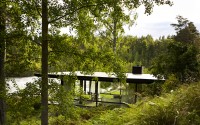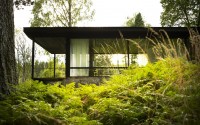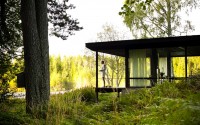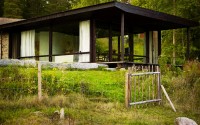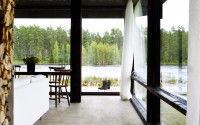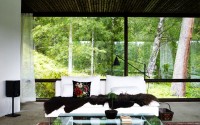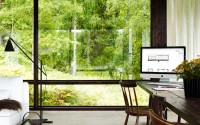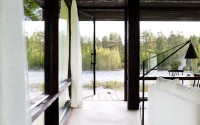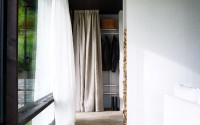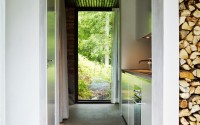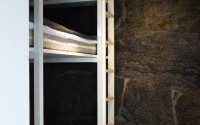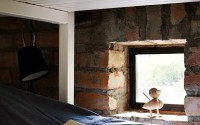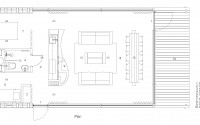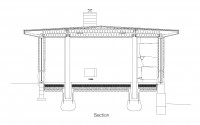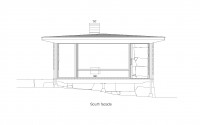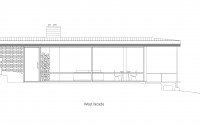Lundnäs House by Delin Arkitektkontor
Modern riverfront summer house situated in Hälsingland, Sweden, designed by Delin Arkitektkontor.










Description by Delin Arkitektkontor
The Lundnäs House is the architect’s own summer house in Hälsingland, Sweden. It is built in an old granite foundation from the turn of the century where there have previously been a factory for ceramic stoves. One of the prerequisites for building on the site, located right on the riverfront, was that the house was built within the existing foundation, which therefore became the main base for the project.
The house was designed and built by the architect over a period of seven years, and design and construction have gone hand in hand. The architect has tried various ideas in the house, including a floor that is heated by hot air from the fireplace, passive solar heating and a new form of roof coverings of wood.
The secluded location makes it possible to have glass walls on three sides. These encloses the hall, kitchen and living room, while the bedrooms and bathroom are located in the back of the house between walls built of bricks recovered from the site. The house has been optimized to accommodate two adults and four children, gaining space partly by placing the kitchen in the hall which made room for a spacious living room with views of the surrounding nature. Locally produced linen curtains can be repositioned to frame the various parts of the surroundings or close the house in periods of absence.
The roof is supported by two 6×6 inch wooden pillars of sawn spruce. These, like all other wood in the house, including the ceiling, is painted with tar/oil mix. The dark ceiling, which continues out over the patio gives the living room a clear horizontal direction and when light falls at night the ceiling dissolves in the night sky which gives a feeling that one is under the open sky. An important aspect of the house has been giving it a poetic dimension, that it should be a place where one can follow the changing light and seasons and connect with the surrounding nature in a straightforward manner.
The house is heated with a central fireplace around which circulating air is heated and then pressed down under the concrete slab through a bed of clay pellets, providing an even and cheap heating of the floor. The incoming sunlight also heats the floor which, together with the heavy stone- and brick walls, stores the heat. This means that the house stays warm even during several weeks of absence. The water system in the house is designed to be easily emptied so that the house can be cooled to exterior temperature, which in this part of Sweden may be below 30 degrees celsius.
The Lundnäs House is an example of how slow construction, using locally produced materials and taking into account the nature and history of the region can combine contemporary aesthetics and philosophy with functional requirements, low construction costs and a small ecological footprint. This house is built to function for at least a hundred years.
Photography courtesy of Delin Arkitektkontor
- by Matt Watts

